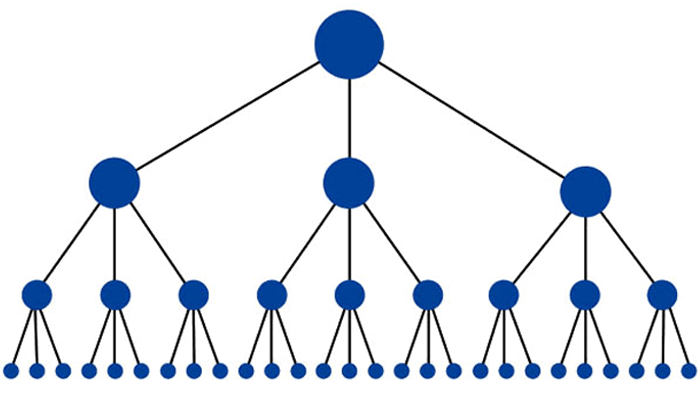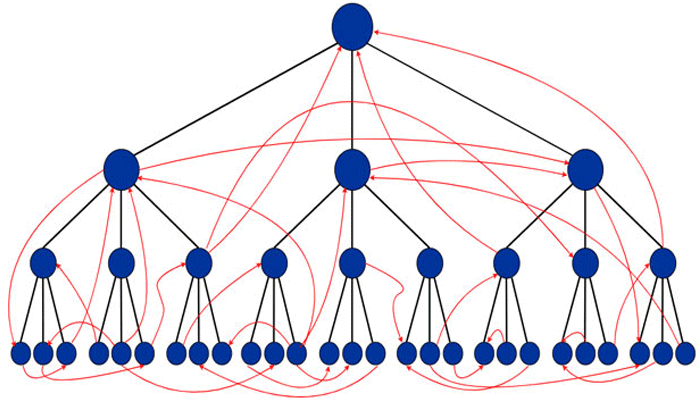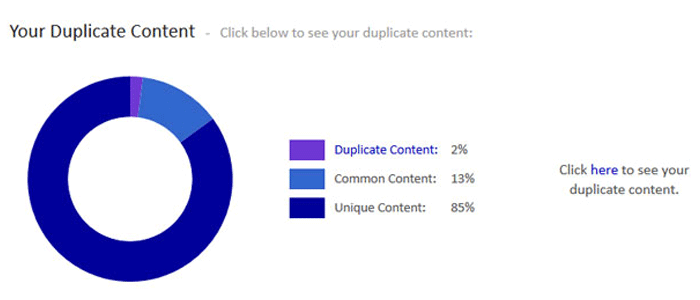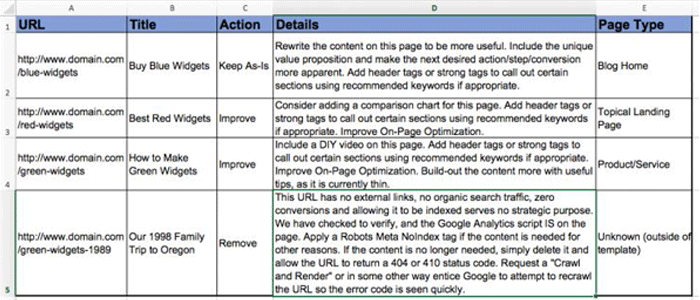Before we get down to the nitty-gritty of content production for a new client, we usually conduct a thorough SEO and content audit to ensure their site is up to scratch, giving them the best chance of performing well in search engine results.
It’s all very well agreeing on a brief to create high-quality onsite content and/or investing in a series of outreach articles to boost offsite SEO, but if the website architecture is fundamentally flawed, it’ll be nigh-on impossible to gain traction and rank competitively in organic search.
Why do a content audit?
There’s inevitably some overlap between a technical SEO audit and a content-focused audit, with elements such as duplication, internal links and topical relevance naturally crossing over. Ultimately, you want to consider every aspect of your website, from the technical signals and code search bots to look out for, to the actual words intended for human eyes (i.e. your content).
Thus, a good content audit will be mindful of SEO best practice, highlighting weak spots and outlining a strategy for success. Great results can be achieved by refreshing and refining your current content, and then built upon by committing to targeted content marketing campaigns.
Needless to say, for best results, you should periodically carry out technical SEO audits as well as content audits, but, for now, let’s get cracking and run through the key steps to undertaking a content audit for your website.
Keywords
Keyword research should form the basis of every content plan, giving you clear insight into the words and phrases potential customers type into Google when looking for your products or services.
To help inform your keyword research, please read the following guides:
- Keyword Research: the Fundamental Practice of Good SEO
- How to use Google’s AdWords Keyword Planner in 5 Simple Steps
- How to use Answer The Public to Create Better Content
One of the golden rules is to settle on a primary target word or phrase for each page. This ensures your content has a clear focus, in-tune with what people are searching for.
There are various shortcuts the search bots use to ‘read’, understand and rank your web pages, and one of them is to give greater weight to the content in the first paragraph. Logic dictates that you’ll lay out the theme of each page within the opening few lines, so it’s important to include your primary target phrase in this space.
You should then use several variations throughout the rest of the text, naturally weaving them in, and being careful to avoid keyword stuffing.
For this page, ‘content audit’ is the phrase we’re targeting, and we’ve used several variations already. It crops up in the opening paragraph as well as the headline (Header 1) and subheading (Header 2).
Header tags are also onpage signals used by search bots, so it’s highly advisable to place keywords within them. To avoid confusion, only use one Header 1, one Header 2, and as many Header 3’s and 4’s as you like.
If your website is lacking a focused keyword structure, this will be one of the first red flags to be noted in your audit.
Keywords are also critically important when it comes to optimising your meta elements…
Meta Elements
In addition to the Headers mentioned above, you should also pay attention to the following meta elements that search bots use to gauge what your site’s all about:
- URL: Make sure it contains a variation of your target phrase. For example, bespoke-digital.co.uk/guides/content-audits is much stronger than bespoke-digital.co.uk/page24.
- Page Title: Not to be confused with headlines, this is the large blue text that appears at the top of Google search results. Read our guide to writing a page title for more detailed insight, but from an audit perspective, inserting a variation of your keywords is crucial, ideally at the start of the title.
- Meta Description: While this descriptive text that describes your web page doesn’t directly influence SEO, it certainly has a bearing on click-through rates – prompting clicks if you promise the right material – so relevant keywords should also be placed here.

If you don’t take care to manually create these elements (which should be fairly easy to do from within your Content Management System), search engines will automatically generate titles and descriptions – dragging text from the content on your web pages – but you’ll be missing a trick and running the risk of truncation (when elements are cut-off mid-sentence).
A detailed SEO or content audit will indicate any missing meta elements and advise on their correct implementation.
Links
Broken links create a poor user experience, frustrating potential customers and potentially scuppering a sales opportunity. A thorough content audit will tell you which links need updating, or you can use a tool such as Check My Links to, well, check your links.
However, aside from listing broken links, a quality content audit will go one step further, highlighting interlinking opportunities between your web pages that you may have missed out on.
Essentially, search bots (like users) use links to navigate your site, and you want to make it as easy as possible for them to crawl and, therefore, index your pages. A healthy internal linking structure should look something like this pyramid created by SEO powerhouse, Moz:

Your homepage is depicted as the big blue dot at the top, with your most important service pages directly below, and sub-pages further down. This is the type of content hierarchy you should be aiming for, although this is very simplified for illustrative purposes, missing out on any cross-linking between pages. In reality, it would look far more like the image below, but with even more wiggly red lines (internal link pathways) than I could visualise here.

Ultimately, your most important pages should have more links pointing their way, laying down a clear pathway for the bots, helping them realise what your most important pages are, increasing the likelihood of high rankings in the SERPs.
Having an intelligent approach to internal links also helps website visitors find your most profitable pages, giving you a better chance of conversion. In turn, the more that people engage with your pages (click links, spend time reading your content, etc.), the lower your bounce rate will become. This will tell Google that people enjoy your website, which should result in a healthy boost up the rankings.
Incidentally, you should also review which pages have high and low bounce rates to reveal which content is underperforming, and which is doing well. This will influence your content strategy and, with refinement, should help improve your overall website performance.
Bounce rates can be tracked in Google Analytics.
Briefly back to the subject of internal links, the anchor text of should also be keyword-rich, again giving a clear signal to bots and users alike as to the content that lays ahead and improving rankings once again.
Duplicate Content
If you have large blocks of copied content across your website, you’ll be shooting yourself in the digital foot. Essentially, search engines are on a mission to return the most authoritative, trustworthy resources at the top of results, but copied content creates confusion, meaning you’re likely to be filtered out of the top ranking positions.
Additionally, where many businesses stumble is having multiple versions of their site live and open to search bots, perhaps a test site sitting alongside the ‘real’ website. Again, this duplication freaks the bots out, as they can’t differentiate between the two, meaning your pages are unlikely to get indexed.
One of our clients, Washware Essentials, suffered this fate, but their rankings surged upon implementing our website audit suggestions.
A common area of duplication is where category, tag or archive pages automatically populate excerpts, taking text from product pages or blog posts to fill the gap. While you can see the sense in this from a user viewpoint, it confuses the bots, so be sure to make every single page unique, or alternatively prevent the search engines from indexing content that you know to be duplicate.
You can use SiteLiner to highlight areas of duplication on your site, generating a quick report that looks like this:

You should also make yourself familiar with this blog post: What is duplicate content, and why should you care?.
Text
At the end of the day, the quality of your writing has to be top notch if you want potential customers to take you seriously.
Research from BuzzSumo and Moz shows that articles of 1,000+ words perform best in search rankings, but writing purely for the sake of an arbitrary word count won’t get you anywhere.
You have to ensure you conduct thorough blog research to ensure you say something meaningful, something that will pique the interest of prospects and peers, if your content is to truly succeed.
A good audit will highlight where your current blog content could be improved, and look for gaps (in line with keyword research) to note what type of material you should focus on next.
When it comes to service pages, it will rarely be possible to get anywhere near 1,000 words, which is a good thing for the audience, because you want to make the buyer journey as straightforward as possible.
However, it stands to reason that the more words you have, the more opportunities you have to naturally weave keywords into your text, so you have to find the right balance. We suggest somewhere between 300-600 words for service pages. Any lower, and this will be flagged up in your audit, complete with suggested edits.
Strong spelling and grammar are also of fundamental importance, and this should be a key focus area for your audit. Having clear calls-to-action is also crucial for service and product pages, and these should be regularly reviewed and tested to see what works.
For further guidance on writing high-quality content that converts, please read our following guides:
- How to use Grammarly for better Content Marketing
- An Insider’s Guide to Digital Copywriting
- The Art of Sales Copywriting
Be Methodical
It’s a good idea to create a single document for each page you’re auditing, laying the key information out like this:
- URL:
- Focus keywords: 3-5 variations
- Page Title: 55-60 characters
- Meta Description: 145-160 characters
- Unique excerpt for overview pages: 25-35 words
- Image File Sources:
- Image Credits:
- Alt tag:
You can then paste the content underneath, and make suggested edits where necessary.
Taking this approach will ensure consistency and guarantee you’re covering all of the SEO bases that search bots scan to understand your content.
You should also use a spreadsheet to provide a content overview. A good framework to follow is this example served up by a member of the Moz community, taken from their article on How to do a Content Audit:

Once you’ve implemented the changes, be sure to track progress. Note where your pages rank before edits have been made and the variety of search terms that it is appearing in the SERPs for, and compare results a few weeks later. If you’ve followed the steps listed above, you should see a marked improvement in your website rankings.
You’ll then be ready to capitalise on these gains by investing in a strategic copywriting campaign that will see you earn more referral traffic and, ultimately, do more business.
There are more than 200 ranking factors that search algorithms take into account when analysing your website, and many of them are content related. Optimisation is all about tweaking and testing to ensure your website is primed for success.
If you’ve got a spare hour and would like more in-depth insight into on-page SEO, please read our 8,000-word guide to onsite optimisation.
However, if this all feels like too much to tackle on your own, then, feel free to drop us a line on enquiries@bespoke-digital.co.uk to arrange your FREE SEO consultation, offering a brief overview of your web presence and what you can do to improve your search performance.
Related Topics:
If you have any comments or questions about this post, or would like to discuss a specific issue with your site, please get in touch using the form below.
And connect with us on social media to stay upto date with our latest news:

